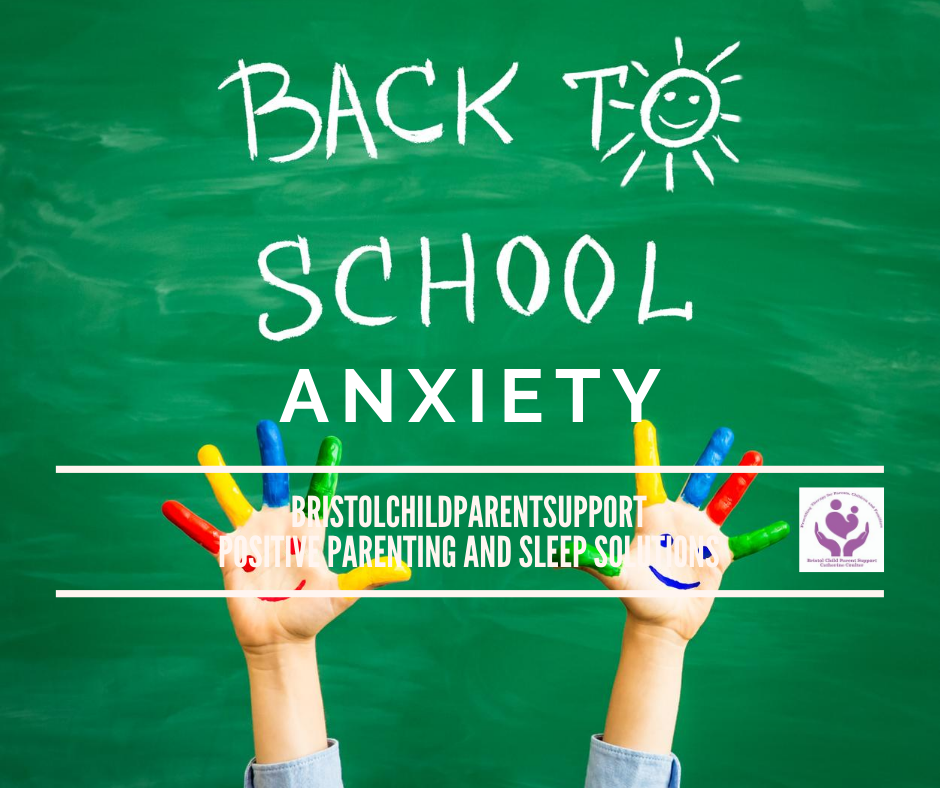The new Autumn term is nearly here. Many children find it difficult to settle and sleep when there is a change in routine. So, If you are anything like me, term time routines have relaxed, and then we are all in a rush and sit and wonder how we can get the family back on track with a consistent sleep schedule.
This is not just for children; the image below is to remind you too. According to the Sleep Charity, 40 per cent of children and adults suffer from sleep issues.

Don’t Procrastinate
Please don’t wait until the night before your child is supposed to start school to try and adjust her sleep schedule. A child’s body won’t automatically jump to a new program; her body needs time to change. If you try to make this transition a sprint, you will likely have an exhausted and cranky child for the first week, which won’t be fun for either of you.
Manage New Term Worries
Anxiety is usually linked to sleeping problems. Excess worry and fear make it harder to fall asleep and stay asleep through the night. Sleep deprivation can worsen anxiety, leading to a negative cycle of insomnia and anxiety disorders.

Returning to school with a new routine can be tricky for many children, and they can often show their worry by not being able to let go to sleep at night. Children who suffer from anxiety ( GAD, Social or Separation) or struggle with transitions start to experience anticipation anxiety regarding school. It’s unhelpful to avoid it, develop a” we can do it “approach, and ask:
I’ve noticed it’s hard for you to go to sleep, I wonder if, or maybe you might be worried about starting school
How can I help you, would it help to…….
I understand you might be feeling…..And you must go to school. I want to help you with this.
Why don’t we sit down and try to work out a plan together?
Many schools, I am sure, will operate excellent graded transition plans. Children who are anxious or have special needs may need extra help with the transition.
**Remember, reassurance does not effectively manage anxiety; mastering the feelings, having a plan, and coping skills do.**
Adjust their bedtimes now for the upcoming Autumn Term.
It can take time to readjust bedtimes and find sleep solutions. Move bedtime 15 minutes earlier every 2-3 nights until you reach your desired rest. Remember that typically an appropriate bedtime for school-aged children is between 7 pm-8 pm. If they have been going to bed later, plan to make gradual adjustments over the coming weeks. The later your child goes to bed, the longer it will take for their bodies to adjust to an appropriate bedtime for the school year.
Morning wake-up time for Autumn Term

The National Sleep Foundation suggests the following guidelines for sleep. ( They are guidelines, some children need more or less)
- Preschoolers (ages 3-5) require 10-13 hours of sleep
- School-age children (ages 6-13) need 9-11 hours of sleep
- Teenagers (ages 14-17) require 8-10 hours of sleep
As you slowly move bedtime earlier during this transition, you might need to start moving wake-up time early, so your child is not sleeping too late. To encourage wake up, you can:
- Have breakfast outside. Get out in the morning sunlight rather than the evening light.
- Allow the sun to come through their blinds or curtains
- Ensure no screen time for at least an hour before bed
- Keep activities quiet for at least 1-2 hours before bedtime.
- Try to keep schoolwork out of the bedroom. Ideally, use bedrooms just for sleeping or clearly distinguish between daytime bed use and nighttime bed use (e.g. by changing a cover, sleep pillows versus wake pillows).
- Ensure filters on phones, tablets, and computers.
- Most night lights emit blue light; changing to glow lights on the amber spectrum will help.

SLEEP FACT: Teenagers’ circadian rhythms shift after puberty, making them tired and waking up later. 8 am to an adult feels like 6 am to a teenager.
Remember, the weekend is not for catching up (social jet lag)
What is Social JetLag?
Social jet lag, a term coined by German researcher Till Roennenberg in 2006, is the discrepancy in a person’s sleep pattern between the weekday and the weekend, which can cause a person to feel “jet-lagged” or tired.
While social jet lag can affect anyone, the problem is widespread among teenagers. Teenagers are biological “night owls” who tend to sleep and get up late when schedules permit, such as on weekends or holidays. The problem arises when they are expected to sleep and get up early for school on weekdays.
Two forces determine when we are awake or asleep at any point in time. The first is how long we’ve been awake. The longer we’re awake, the more tired we feel, and it’s easier to fall asleep.
There is more on this in the video below:
But, this other force keeps us awake during the day, which opposes that sleepy force or sleep debt that is building up. This is called our internal body clock or circadian rhythm. Dramatically adjusting the circadian rhythm confuses the body and brain – no longer knowing what time to go to sleep and what time to get up, which makes us feel horrible.
Implement a New Term Sleep Meeting

Use a problem-solving approach to work it out together; consequently, your child will be more motivated to change.
Have a meeting with your child and let her know that bedtime will change. Let them be part of the process. This will be easy if you already implement Family Meetings. It is one of my favourite Positive Discipline tools. Many clients find them helpful and positive. You can listen to the Soundcloud audio below if you need some tips to get started:
Make a bedtime routine chart and set a reward for cooperative behaviour. As I am not keen on monetary bonuses, here are several alternative ideas:
- Have more Special time
- Make a cake or food together
- Play football or some sport
- Play cards
- Picnic in the park
- A day off from Chores
Implement a Calm and Safe bedroom Environment
Creating a place that promotes calmness and tranquillity for sleep will help your child get to sleep quicker and better. Make sure the room is cool and dark. Also, try to clean up the clutter in the room so that your child goes to bed with a lovely clean floor and won’t be tripping over toys or dirty clothes when she is trying to get ready in the morning.
Develop a daily calm down/wind down habit
As children and parents wind down for the night, the bedtime ritual provides a moment to reconnect. Therese are some examples of ideas to help children wind down. Always start with the breath; abdominal breathing will make your child calm. If they struggle with the concept, make it playful by:
- Practising
- Imagine breathing by pretending to blow out candles. Imagine that our worries are clouds and can float away.
- Practising gentle breathing by blowing bubbles
- Imagine being the ocean waves breathing in and out.
Use a stuffed animal toy ( great for preschoolers)
Lie down together, place your child’s favourite toy on their belly, then ask them to feel down into that place and notice their belly is moving up and down. This teaches your child how to breathe deeply. Remember, practice, practice and practice. Practising this throughout the day will help the nighttime routine.
You can also offer my guided visualisation below, but you can also make up your own using the following steps. I like to use the model below:
Child Educational Psychologist Charlotte Reznick, author of The Power of Your Child’s Imagination: How to Transform Stress and Anxiety into Joy and Success, uses a five-stage model when they engage in guided meditation with children. The model consists of the following:
- Relaxation and induction. The first two stages are aimed at getting anxious children to relax.
- Main imagery experience. The middle stage of the process uses imagery related to the particular goal of the exercise. If the goal is to provide a sense of calm, you can use calming images of the beach or a warm bed.
- Return and processing. The final two stages focus on bringing the anxious children back to their waking consciousness and remembering the process.
Guided imagery gets another plug for being able to skip the natural defences of the logical brain and go straight to the intuitive part of the brain, allowing children to speak from their hearts.
Other Activities such as playing with:
Jigsaws, colouring and offering a massage.
In Conclusion
The beginning of school sets the tone for the year, and children with trouble sleeping may struggle for the remainder of the term. I would advise parents to consider their children’s sleep habits and how they may need to be readjusted before restarting school. Remember, be Consistent.
Remember: parenting is hard work, and you all deserve support. And when it all starts to feel impossible, ask for help. If you need help and support, contact me for a consultation or join my newsletter community. With Gratitude Catherine
If you enjoyed this blog post and found it helpful or inspiring, please share it with your friends on social media by clicking on the icons on the side. Thank you for visiting my website!
DISCLAIMER
All content provided by Bristol Child Parent Support is intended for entertainment purposes only. Always check with your doctor in the first instance. Please do not use any of this material while driving or when relaxing and falling asleep is unsafe.



